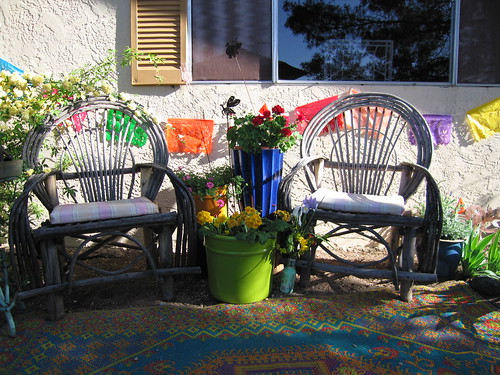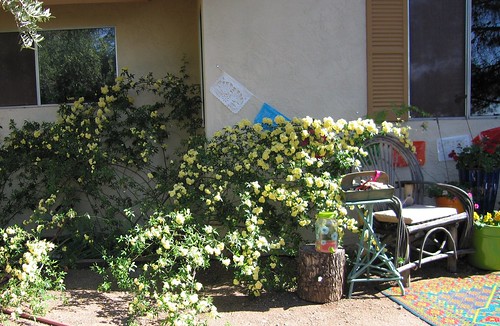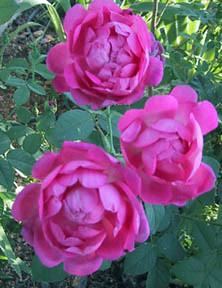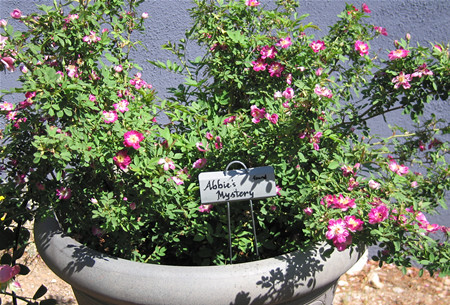Did you read
The Secret Garden as a child? Did you ever fantasize about finding your own secret place like that? We did.
My husband and I lived in El Paso, TX for a while, and loved to take day trips into New Mexico. Usually it was to Mesilla, a charming town that used to be the territorial capital of the area that covered what is now Arizona and New Mexico. Our other favorite trip was to go to Cloudcroft and Ruidoso in the Sacramento Mountains where it was nice and cool; we would typically stop for a picnic lunch along the way.
One year (1989?) we stopped and pulled over into the towering trees in the town of
Tularosa, and discovered a wondrous garden. You see, Tularosa has what is called a "water district," a part of town where the water flows freely through acequias, shallow, unlined ditches beside the road. Anyone who lives in the district gets water for flood irrigation via the acequias. The cottonwood and walnut trees are nearly the size of sequoias, and small farms abound.
There in the shade of one of the huge cottonwoods we could see a tangled garden and a tiny adobe house beyond. As we were finishing lunch, a man came over from across the street, introduced himself as Mr. Domingues, and he told us the story of the garden.
It turns out that the little adobe was the second house built by the Spanish when they settled the area in the 1860s, and because water is so plentiful, most of the original plantings have survived: Manzana de San Juan (apples), figs, grapes, and roses. Mint and sweet peas were also running wild. Carey and I were both amazed. I can't think of any gardens in the desert southwest where the original plantings have been preserved! Without water they quickly wither and die, but the acequia system kept this garden alive.
Years later, when I knew more about heritage gardens and roses, I wrote to the "
rose rustlers" of New Mexico to see if they would take cuttings so the rose would be preserved if something happened to the garden. Our conversation is actually preserved on someone's website! [
Peaceful Habitations Roses]. Obviously this page hasn't been updated since 2002. I will have to give them a call and see what happened.
 While my garden is in its summer doldrums, my brother's in Seattle is quite lovely. He has been working on play areas for the kids and evening out the slope. He recently finished the retaining wall, and envisioned it with flowers cascading over the top. The rose in the background is 'Constance Spry.' Glorious ain't she?
While my garden is in its summer doldrums, my brother's in Seattle is quite lovely. He has been working on play areas for the kids and evening out the slope. He recently finished the retaining wall, and envisioned it with flowers cascading over the top. The rose in the background is 'Constance Spry.' Glorious ain't she?







